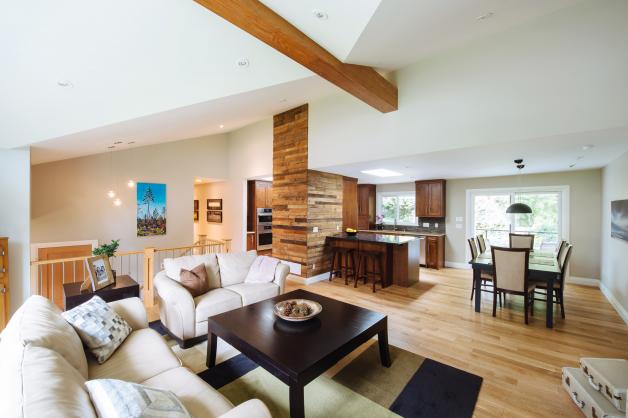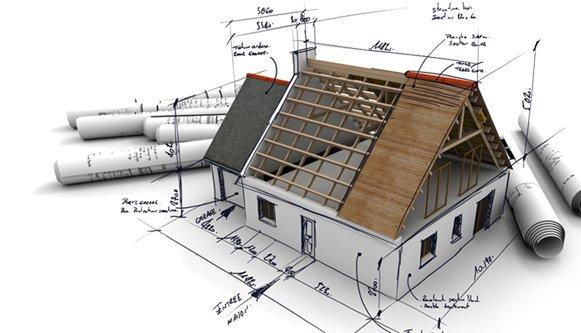
If you are considering a renovation or home building project, you will face a choice between two very different contract structures employed by contractors and design/build firms.
The first contract structure is commonly known as “Cost-Plus”. As suggested by the name, these contracts are structured to charge you the cost, plus an agreed upon markup percentage. The markup is applied to every trade, building material and finishing product/material used in the performance of the work. Additionally, the contract will also outline separate hourly rates for work performed by the contractors carpenters, site leads and project managers. In this model, the contractor is assured of a profit. However, you have no contractually specified price because the “cost” in the “cost plus” equation is not set. Indeed, the final cost of the project is revealed only a few months after project completion has passed, and the contractor has finally received all trade and supplier invoices. You are billed on a periodic basis, typically monthly, with a list of incurred costs and labour hours consumed with the markup applied. For example, if the drywall invoice that shows up is $20,000 and the contract you signed is a “Cost-Plus 24%”, you will pay $24,800 plus applicable taxes. Pretty straight forward, right?
Peering under the hood of this commitment, however, reveals some concerns that are the basis for so many HGTV shows. Using the drywall example, what happens if the contractor’s preliminary budget estimate of $250,000 for the entire project assumed $15,000 in drywall charges, but the invoice comes in at $20,000? You are still charged $24,800 based on the terms of the contract ($20,000 plus the 24% markup). In addition, the contractor has enjoyed an additional $1,200 in profit, due to the additional markup. Not only do you have no firm commitment to the total project cost, the contractor has a perverse incentive to allow costs to escalate. The contractor shoulders none of the risk and pockets all of the upside.
This is the root cause of many of the challenges that confront homeowners working with cost-plus contractors; artificially lowball estimates, poor disclosure of construction risks, vague definition of the work, misalignment between the designer and contractor, deferment of key decisions until well into construction, cost placeholders for unselected products that seem inadequate and limiting, multiple change orders and, ultimately, a total project cost that is significantly higher than what was expected and discussed.
Simply put, there is no contractually defined project cost and certainly no accountability to achieve any numbers “discussed” during sales or design. The project will “cost what it costs” while the contractors profit is assured by the only binding term of the contract; the markup. You shoulder the entire risk without any contractual protection. That is a huge leap of faith.
The alternative contract structure is “Fixed Price”. (full disclosure; this is the one we firmly endorse as serving your best interests). Once again, the name says it all; the exact price of the project is contractually defined BEFORE construction commences. Rather than a contract only outlining the profit percentages, and hourly rates, it simply agrees to the total amount to be paid. The work to be performed for that fixed price is exhaustively defined in supporting drawings, written scope and written specifications. If there are unresolved decisions or risks, those too are documented along how these undisclosed risks will be reconciled.
You may be wondering how this number may be known before work is performed and trade, material invoices start to flow. The honest answer is – it’s not easy. It demands a great deal of experience and a design journey that includes thorough assessment and disclosure of risks, complete and accurate scope and specifications right down to the colours of grout, and advance involvement from all trades and suppliers. Why? Because a 100% fixed price contract requires a thoroughly completed and documented design and planning phase.
This is the “heavy lifting” side of design work generally absent from cost-plus experiences. A detailed, completed design provides you with clear targets and reliable information to inform decisions as design progresses. Fixed price contractors still seek to make a profit, and lets assume that the markup is exactly the same percentage as the cost-plus contractor. The fixed-price contractor shoulders the full weight of cost overages or estimating errors, which is where it should be, as they’re the one’s who are being hired as the trusted professional for your renovation or home building project. If the invoice submitted by the drywall trade exceeds budget, the variance erodes the contractors return. Due to this level of accountability, it’s in the contractor’s best interest to accurately scope the work, brief the trade and secure a firm written quote. This applies across the board; electrical, plumbing, framing etc. Better planning leads to lower risk.
The entire experience with a fixed price contractor differs markedly from cost-plus; there is a shared incentive to thoroughly design and plan each aspect of the project ahead of time, as the result will be a project completed on time, and on budget. While a “higher than expected” drywall invoice will profit a cost-plus contractor, it will hurt the Fixed-Price contractor. For this reason, the Fixed-Price Contractor wants to ensure design is thoroughly completed before construction starts to ensure they won’t be absorbing “surprise” costs. The Fixed-price contractor is motivated to figure out site access and drywall delivery details, as well as debris removal instructions, heating and water requirements, and even how many days on site will be required, as these will all affect the the price from the drywall contractor.
At first glance, the Cost-Plus and Fixed Price contracts may appear quite similar. The absence of a firm cost commitment in Cost-Plus, however changes every facet of your experience from the first meeting with the contractor to the final invoice after construction completion. There is no escaping the fact that Fixed Price demands more work up front, but that hard work will be rewarded with a project completed on-time, and on budget. Your home is a major investment, and the hub of your daily life. We believe that the combination of a thorough and collaborative design phase resulting in a 100% Fixed Price and Schedule Commitment provides the peace and mind that’s needed in order to move forward with a renovation or new home building project.
Have any questions about your project, or how our model works, email us at info@kenorah.com or call 604.371.1455!



